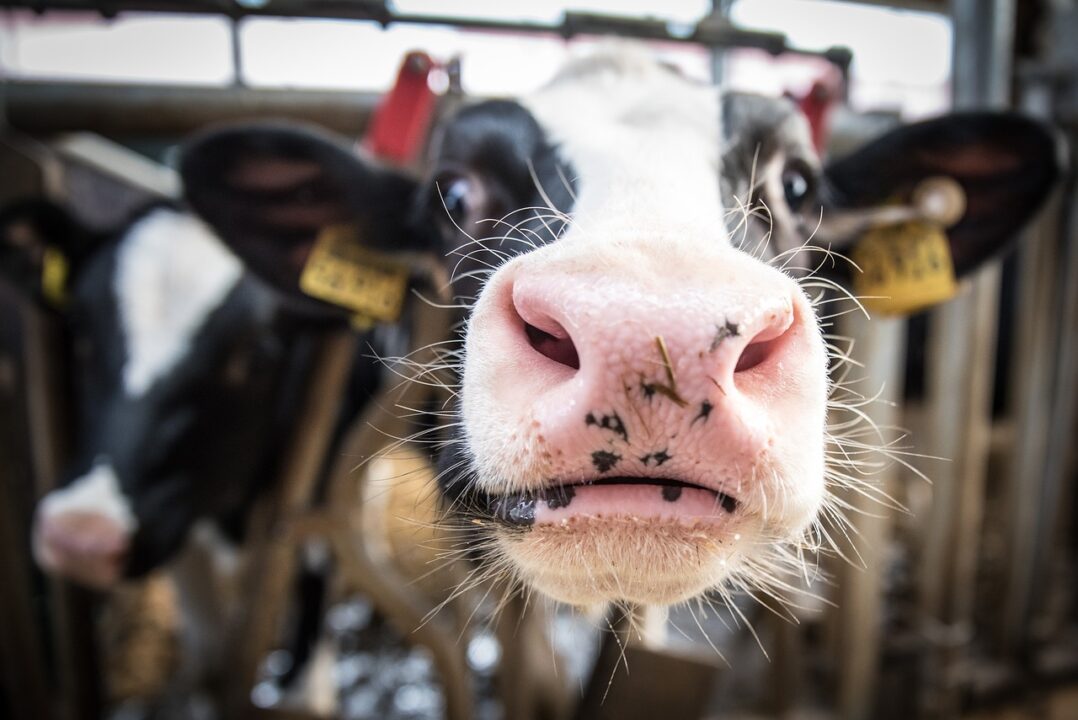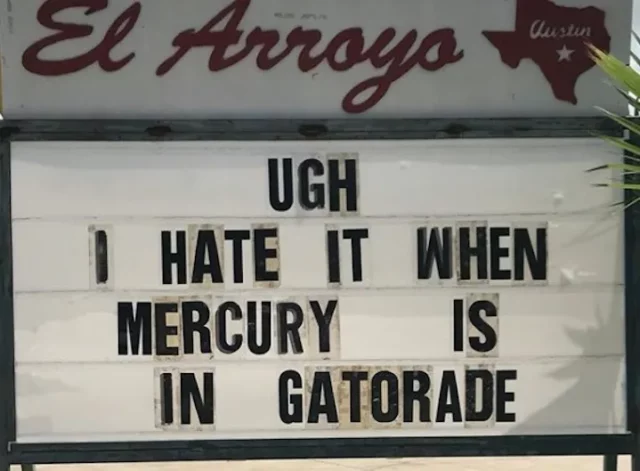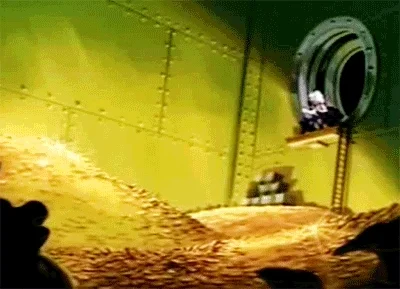In 2014, SwimSwam’s Tony Carroll (who is now a hotshot coach at Club Wolverine) calculated how much it would cost to fill an Olympic-sized swimming pool with various items that aren’t chlorinated water.
Now, a decade later, it’s time to spin that exercise forward, taking advantage of America’s new favorite hobby: tracking inflation.
While it’s hard to figure exactly how many gallons are in the temporary pool built at Lucas Oil Stadium (some local media reports 860,000 for three pools, which isn’t nearly enough), we calculated the main competition pool at IUPUI to be about 905,845.97 gallons, give-or-take.
Let’s assume we don’t have access to bulk or wholesale pricing
We’ll start simple: milk. The price of a gallon of milk is well-tracked as a measure of inflation, and in April 2024, the US Labor Department reported that the average price for a gallon of milk was $3.868. That’s about a 37-cent increase from 2014, and at the price it would cost roughly $3.5 million to fill a pool.
The two most common foods that we’re asked to fill pools with are spaghetti and Jello.
It would take about 2,070,505 pounds (or 33,128,082 ounces) of dry spaghetti, which becomes 5,176,262.5 pounds of cooked spaghetti.
A 4 pound package of spaghetti on Walmart.com costs $3.88 (only a 10 cent increase from 2014). That would cost roughly $2 million of spaghetti to fill the pool. Filling the pool with meatballs, which cost $9.11/pound at Walmart.com (premade), would be significantly more.
A 3 ounce box of Walmart-brand Great Value Strawberry Gelatin only costs 98 cents – 1 cent less than it did in 2014. Tony said it cost 99 cents in 2014 (deflation? Maybe he used the proper Jello brand). At any rate, we’re pinching pennies on the experiment. To make one gallon of Jello, you need 24 ounce of mix + 16 cups of water. A cup of tap water at Indiana municipal water rates is about .08 cents. So a gallon of Jello costs about $7.8528. To fill a pool would be about $7.1 million. Tony calculated $21 million in 2014…but I think he forgot to account for the water (prepared Jello would be way more fun to swim in than dry Jello).
How about Gatorade? A 12-pack of 20 ounce bottles (we don’t play with powdered Gatorade) is 5 cents per fluid ounce.
That comes out to about $5.8 million to fill a pool – surprisingly less than Jello.
The price of $1 hasn’t changed in a nominal sense, so these numbers haven’t changed.
- To swim with President George Washington (1 Dollar Bills) = $30,353,560,839,695.00
- To swim with President Abraham Lincoln (5 Dollar Bills) = $151,767,804,198,475.00
- To swim with Alexander Hamilton (10 Dollar Bills) = $303,535,608,396,950.00
- To swim with President Andrew Jackson (20 Dollar Bills) = $607,071,216,793,900.00
- To swim with President Ulysses S. Grant (50 Dollar Bills) = $1,517,678,041,984,750.00
- To swim with Benjamin Franklin (100 Dollar Bills) = $3,035,356,083,969,500.00
But what about the famous “cheaper to tile your floor with pennies than with flooring material” paradox? It would cost only $4.9 billion to fill a pool with pennies.
And then swimming’s most-famous “fill it with”, the one that actually happened, Nathan Adrian and the syrup-filled pool.
Adrian starred in one of the most famous episodes of Myth Busters. They were trying to prove that you could swim just as fast in syrup as you could in water. In this episode, Adam and Jamie began by digging two long trenches and lining them with plastic sheeting to serve as swimming pools. They filled one with water and the other with syrup made from 750 pounds (340 kg) of guar gum and 10,000 US gallons (38,000 L) of water. Adam and Jamie each swam three lengths in the water to establish their benchmark average times, then did the same in the syrup. Adam’s time in syrup was 28% slower than in water; Jamie tired quickly and withdrew from further testing.
Thinking that the high viscosity of the syrup may have affected the results, Adam and Jamie replaced it with a mixture that was only slightly more viscous than water. Adam again swam three lengths in each pool and found that his syrup time was now only 2.8% slower than in water. A third batch, this one about as viscous as maple syrup, was prepared for both Adam and Olympic gold medalist, Nathan Adrian. Adam and Nathan swam 5.4% and 9% slower here than in water, respectively (though Adam and Jamie decided to disregard Nathan’s results, since he was so familiar with swimming in water that he lost his technique in the syrup and thus could not deliver a consistent performance). Based on the results for light and medium syrup, which they considered to be within the margin of error for their testing method, Adam and Jamie declared the myth plausible.
If Nathan Adrian were to try to benefit from the high viscosity of the syrup and decided to switch his training to syrup full-time, he would need to buy 4,831,179 bottles of syrup. Amazon sells Mrs. Butterworth’s in 24 ounce bottles for $3.34. To fill the IUPUI pool full of syrup, it would cost Nathan $16,136,137.86.
But that’s not MAPLE syrup. A 24 ounce bottle of Pure Maple Syrup, Grade A Dark, on Amazon, costs $26.97. That would be a yikes-inducing $130,296,897.63 (and a whopping 12.7 billion calories, if you’re counting).
Cost to Fill an Olympic Swimming Pool
| Item | Cost per unit | Number of units | Total Cost |
| Milk | 3.868 | 905,846 | $3,503,812.21 |
| Spaghetti | 3.88 | 517,626 | $2,008,389.85 |
| Jello | 7.8528 | 905,846 | $7,113,427.23 |
| Gatorade | 0.05 | 115,948,284 | $5,797,414.21 |
| Pennies | 5400 | 905,846 | $4,891,568,238.00 |
| Mrs. Butterworth’s | 3.34 | 4,831,179 | $16,136,137.86 |
| Real Maple Syrup | 26.97 | 4,831,179 | $130,296,897.63 |
| Water | 0.01175 | 905,846 | $10,643.69 |



How much would it take to fill a Olympic pool with diesel
Slow news day, huh?
Exactly the type of cutting edge journalism we expect from SS.
Updated psych sheets are up, and include Dobler and Roy: https://websitedevsa.blob.core.windows.net/sitefinity/docs/default-source/eventsdocuments/events-posting/2024-u-s-olympic-trials-pre-scratch-psych-sheet.pdf
Great story to waste unlimited data and 35″ of my lifetime.
Swimming in syrup was studied in 2004 at U. Wisconsin.Swimming in syrup is as easy as water : Nature News
For 16 swimmers of differing abilities, times differed by by no more than 4%, with neither water nor syrup producing consistently faster times. While “viscous drag” (basically friction from your movement through the fluid) is higher in syrup, you also generate more forward force from every stroke. The two effects cancel each other out. This is called “inviscid flow” which means that the that viscosity of the fluid does not impact the results.
Yes, and the conclusion of the Mytbusters was basically “it will screw up the technique of a trained swimmer, but for just a regular, it’s roughly the same”.
The fact that it is still $10,000 of water puts into perspective how much water a pool holds. WOW
I had a neighbour with a backyard pool who had plumbing issues one year and thought filling it up with the cheapest mineral water he could find was gonna be a smart move….
It took him several days of trips to the store just to buy enough bottles
This might be the best research piece released on this site to date